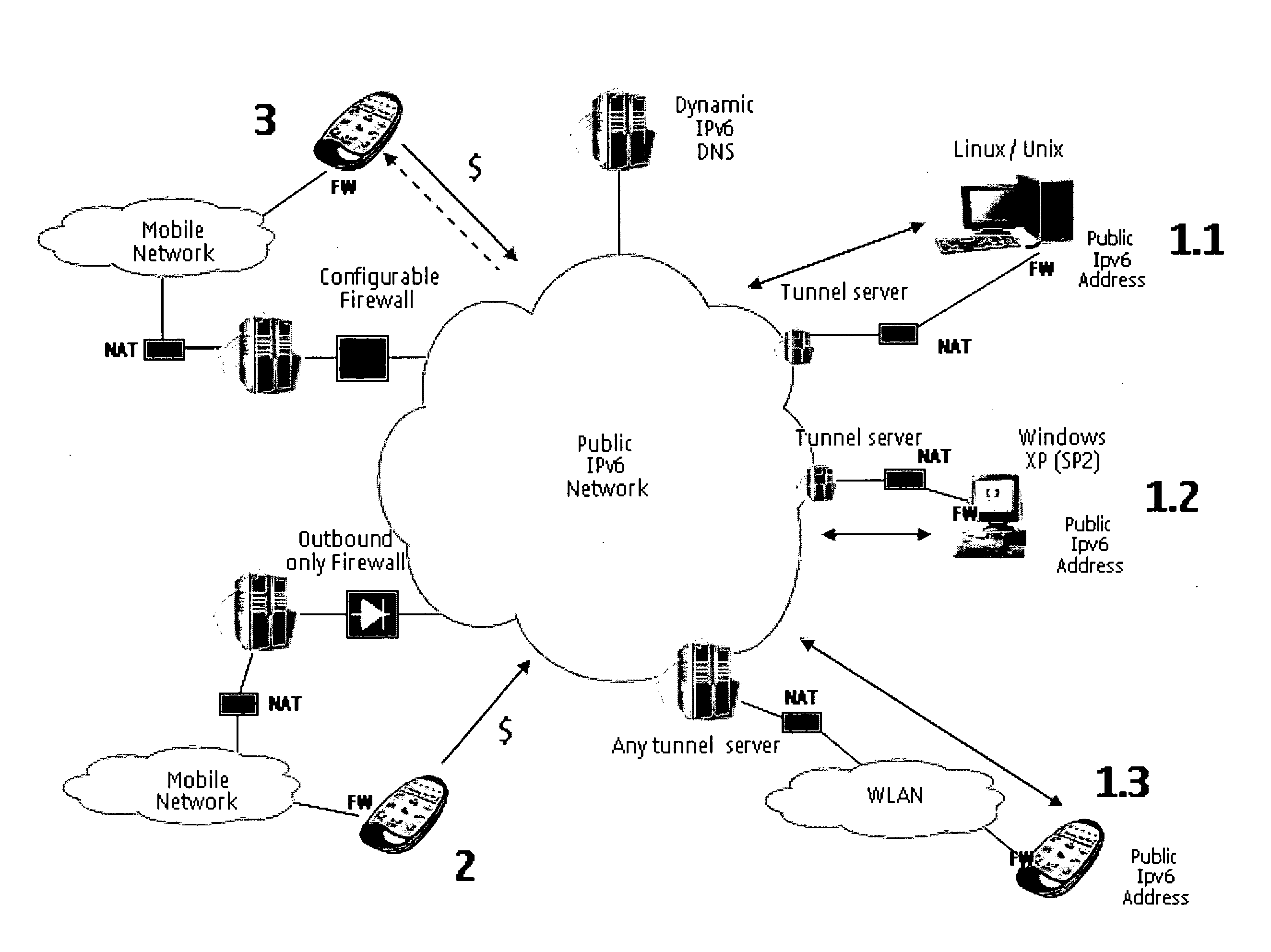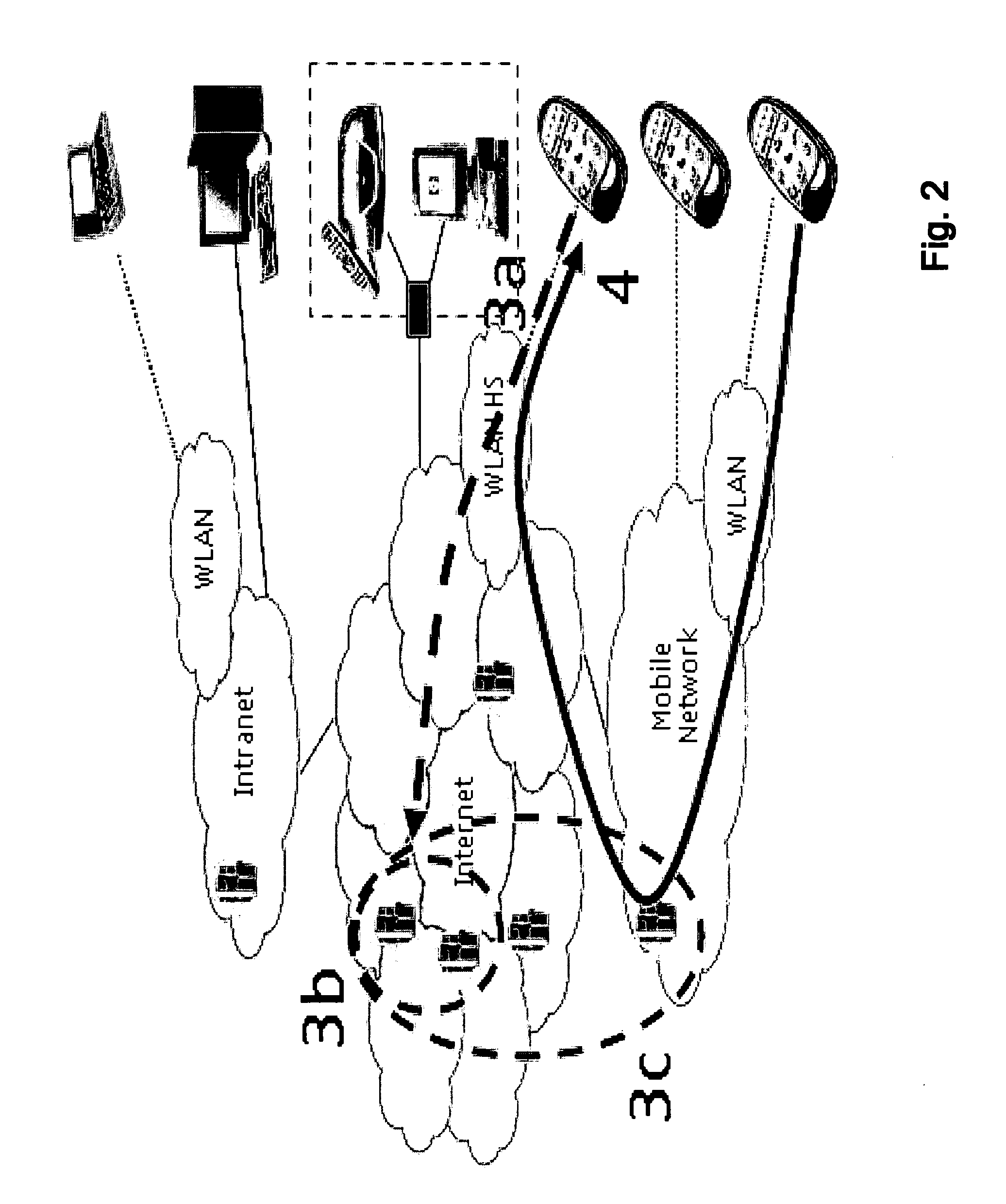Terminal reachability
a terminal and reachability technology, applied in the field of communication networks, can solve the problems of inability to contact remotely services at home, inability to direct connection between clients in access networks, and inability to implement client-server solutions in mobile terminals
- Summary
- Abstract
- Description
- Claims
- Application Information
AI Technical Summary
Benefits of technology
Problems solved by technology
Method used
Image
Examples
case 1
Connection Through Public Tunneling Servers (Case 1)
case 1 (
[0145] Case 1 (with three sub cases) illustrated in FIG. 6 describes the basic method to be part in public IPv6 Internet.
[0146] For example, Linux / Unix based machines can use 6 to 4 protocol to get public IPv6 addresses routed on top of IPv4, when having interface for public IPv4 address. If the workstation is behind firewall of NAPT, other tunneling technologies need to be used, like IPsec or PPPOE. The example 1.1 in FIG. 6 shows a case where the workstation is behind cone NAT (gray box), so one possible technology is to use Miredo (Open source version of Teredo protocol). Using that protocol packet routing is mainly done using public NAT IPv4 address and UDP port pairs, but still the workstation gets (possible temporal) routable public IPv6 address.
[0147] Another example 1.2 in FIG. 6 shows similar situation in case that another PC has been connected to public IPv4 Internet through cone or restricted NAT. All Windows XP installations (with SP2) have the capability to open Teredo...
second embodiment
[0183] In the following the invention will be described.
[0184] The second embodiment is related to simplifying the procedure required by a consumer when his terminal becomes node in the overlay network described above.
[0185] The second embodiment is an extension of the first embodiment but could be utilized to simplify registration in other similar type of networks.
[0186] If a (first-time) registration to the overlay network cannot be made simple for the consumers, the usage of the network may be low, and also the value of the overlay network to other parties may be less.
[0187] Also, it may be advantageous to handle cases where the terminal has been damaged or lost in a way that does not render the previous hostname and firewall authorization tickets useless.
[0188] According to the second embodiment, the registration procedure for joining overlay network should be made as simple as possible. Also examples for how to protect credentials used to make dynamic DNS updates and how to...
PUM
 Login to View More
Login to View More Abstract
Description
Claims
Application Information
 Login to View More
Login to View More - R&D
- Intellectual Property
- Life Sciences
- Materials
- Tech Scout
- Unparalleled Data Quality
- Higher Quality Content
- 60% Fewer Hallucinations
Browse by: Latest US Patents, China's latest patents, Technical Efficacy Thesaurus, Application Domain, Technology Topic, Popular Technical Reports.
© 2025 PatSnap. All rights reserved.Legal|Privacy policy|Modern Slavery Act Transparency Statement|Sitemap|About US| Contact US: help@patsnap.com



